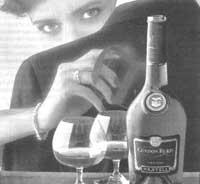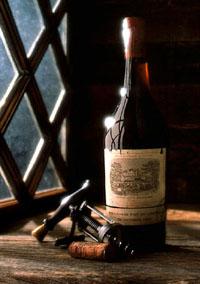Wine, yes sweet drink!
2000/10/10 Mendiburu, Joana - Elhuyar Zientziaren Komunikazioa
The chemical components are responsible for the color, taste and smell of wine. In addition to tasting, wine can be distinguished by chemical analysis.
Wine has long awakened some curiosity. Proof of this are his literary references, such as Baudelaire's poetry. But, in addition to literature, being a prestigious drink, it has much to say in society and is the basis of scientific studies. Why is one wine blacker, more acidic, or sweeter than another? Scientists have tried to find answers to these kinds of questions.
The main and well-known ingredients of wine are water and alcohol, but they are not the only ones. The analyses contain different aromas and liquids.
The quality of the wine depends largely on the amount of water. Grape juice contains between 85 and 90% water, but sometimes that grape juice is also diluted in water. To find out if this is the case, an analysis of the oxygen isotopes is performed. That is, the study of the different forms of oxygen that are characterized by their weight. In this case, the lighter the oxygen, the more diluted the wine is. This analysis also serves to identify the origin of wine.
Among the alcohols containing wine, ethanol stands out. However, if the producer wants to enjoy wine or increase alcohol graduation, just add diethylene glycol and methanol respectively. In any case, methanol should be used carefully as it can cause blindness and in the worst case can cause death.
Other components
When defining a wine, the smell is also very important. Among the aromas are linalone and sulfuric dioxide, one of them responsible for the acidity of the wine and the other for the bad smell. Sulfuric dioxide is generated in fermentation. For its elimination wine is aerated or some precipitation additive is used.
Color is also important to define wine quality. Natural wine dyes are anthocyanins, pectin and tannin. The latter is found on the surface of the grape and in the nuggets, and as the wine ages, it also causes the disappearance of the acidity. The more tannin, the better the wine ages. So the wine is sometimes added tannin.
But conservation has for years been the main problem for producers. Microbial proliferation produces acetic acid that causes wine to pickle. For the conservation of wine sulfur is used, which inactivates the proliferation of bacteria. Scientists measure the amount of sulfur, precipitate and weigh.
The quality of the wine is not only due to the work of the winemaker. Obviously, the quality of the vine also has a lot to do with it. To study the origin of the plant an analysis of an enzyme or the leaf itself is performed. To improve the quality of the vine, as is done with animals, the best plants are selected to create new plants or, through genetic technology, a DNA study is carried out.
Despite the prestige of winemakers, science also has its weight in the wine market. To identify the wine you do not need to be an expert taster, just know to perform chemical analyses. However, knowing how to taste and appreciate is not bad either.

Gai honi buruzko eduki gehiago
Elhuyarrek garatutako teknologia






